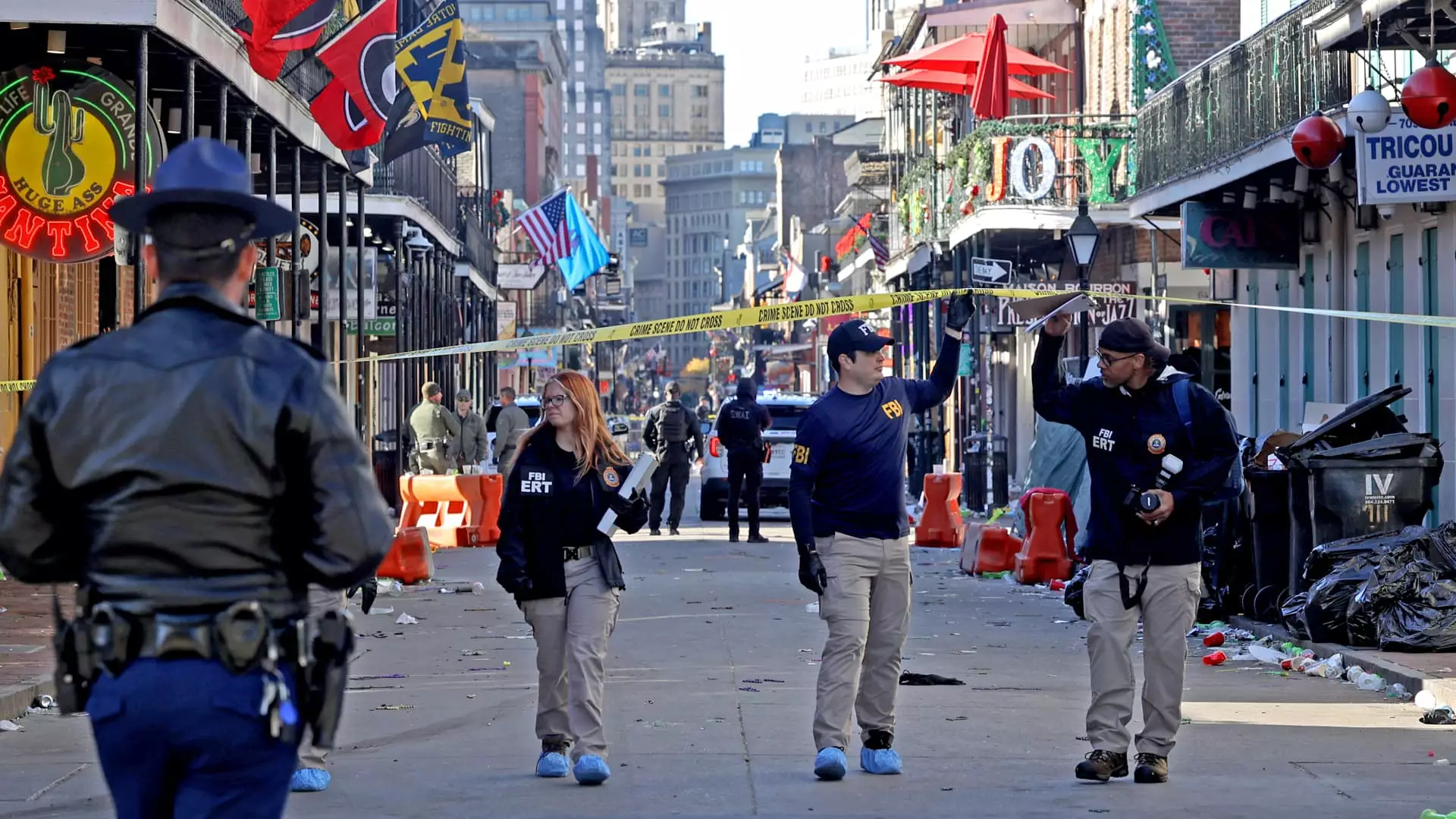The start of the new year in 2024 witnessed a chilling series of violent incidents that has left communities grappling with tragedy and fear. A car-ramming incident in New Orleans took place early on New Year’s Day, where a driver, later identified as Shamsud-Din Jabbar, claimed the lives of 15 individuals and injured around 30 others on Bourbon Street, a location synonymous with festivities and celebrations. In a disturbing twist of fate, these incidents coincide with the explosion of a Tesla Cybertruck outside the Trump International Hotel in Las Vegas. As law enforcement investigates the possibility of connections between these incidents, the narrative raises essential questions about security, military backgrounds, and the preeminence of extremist ideologies.
Authorities are not only looking at the immediate aftermath of these tragic events but also digging into the backgrounds of the suspects involved. Jabbar, a 42-year-old Army veteran, had a notable military career marked by service in HR and IT roles between 2006 and 2020, which included a deployment to Afghanistan in 2009. This military service provides a backdrop that warrants further investigation, particularly regarding how such training might intersect with violent actions like the one observed in New Orleans.
Interestingly, preliminary investigations suggest the ramming suspect and the unidentified individual linked to the Las Vegas blast might share some military ties. Such commonalities raise significant concerns about how military experience could be connected to potential radicalization or severe ideological beliefs. These connections highlight the complexity of national security concerns when individuals with a military background engage in domestic terrorism.
The use of an ISIS flag during the New Orleans attack further complicates the narrative. The troubling implications of aligning such acts with extremist ideologies cannot be understated. With the FBI treating this as a terrorist act, it signifies an acute awareness of how global terror networks exploit domestic vulnerabilities. Understanding the motivations behind these actions is critical for law enforcement agencies, which is why investigations are extending beyond the direct perpetrators to their potential networks.
In parallel, the Las Vegas explosion, which also saw heightened security measures across Trump properties, illustrates how these acts of violence can create ripple effects that extend into major cities. Enhanced security protocols are now a standard response following such incidents, reflecting a broader societal concern for safety that culminates in increased scrutiny of public venues.
An intriguing aspect of both incidents is the discovery that both vehicles involved were rented from the same company, Turo. This raises questions about the responsibilities of rental companies in preventing such tragic outcomes and their role in ensuring the vehicles are not used for harmful intentions. As these companies evolve in the gig economy, monitoring the behavior of renters and enhancing screening protocols becomes crucial. Turo’s willingness to cooperate with law enforcement indicates an acknowledgment of their role in addressing safety concerns surrounding their platform.
In the New Orleans tragedy, local officials are testing the effectiveness of current pedestrian safety infrastructure. In a post-event critique, New Orleans Mayor LaToya Cantrell noted that bollards intended to protect pedestrians were still undergoing construction at the time of the incident. With major events such as the Super Bowl set to occur soon, these infrastructural oversights warrant urgent attention to prevent further violence.
The juxtaposition of festivities and tragedy in such popular tourist destinations raises essential points about preparing urban areas for public safety. Planners, businesses, and law enforcement agencies must work collaboratively to establish protocols and infrastructure capable of reacting swiftly to potential threats.
Ultimately, the events of New Year’s Day serve as a stark reminder of the complexities surrounding public safety and national security. As investigations unfold, officials are called upon to untangle the threads connecting military experience, extremist ideologies, and personal grievances that fuel acts of violence.
Society must grapple with these sobering realities while prioritizing preventative measures that emphasize safety and community resilience. Each incident not only demands accountability from those directly involved but also highlights the shared responsibility of all stakeholders—from government officials to private sector entities—to foster a safer environment for everyone. The interplay of law enforcement, technology, and community engagement will be pivotal in addressing the challenges posed by such violent occurrences in the future.



Leave a Reply